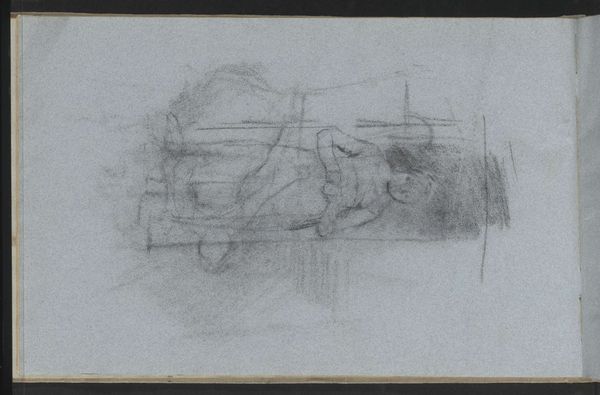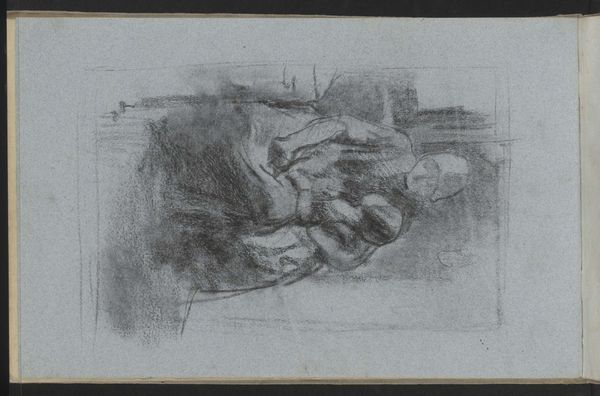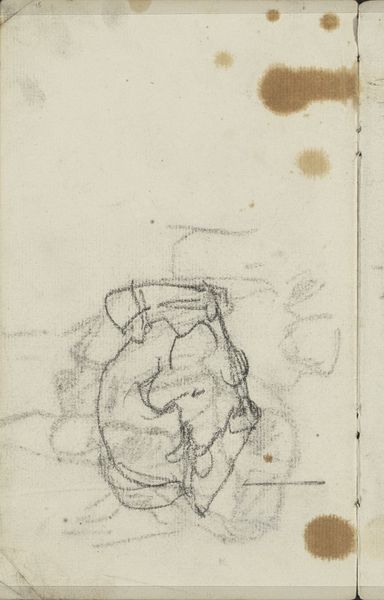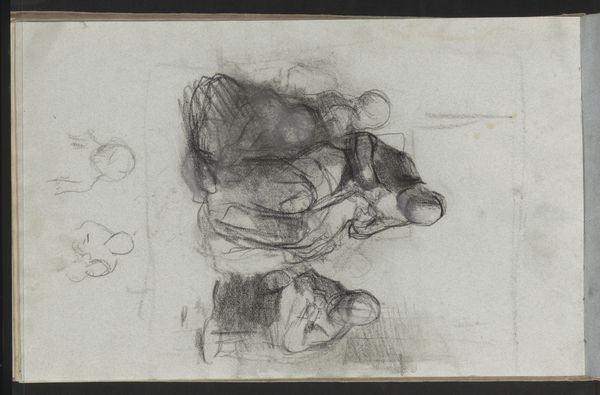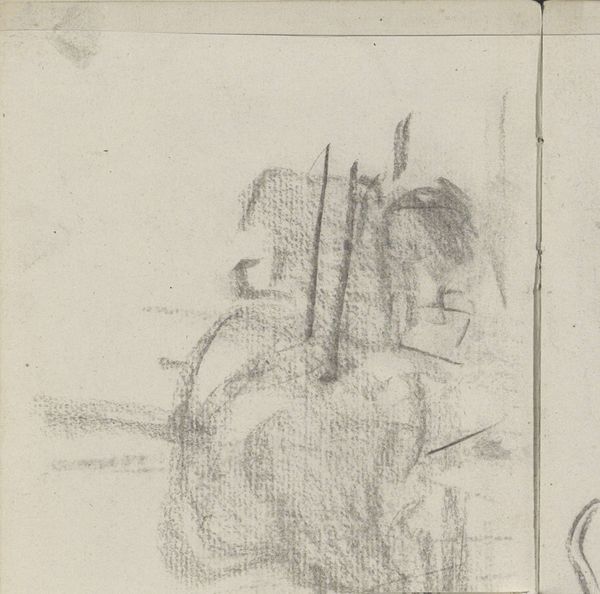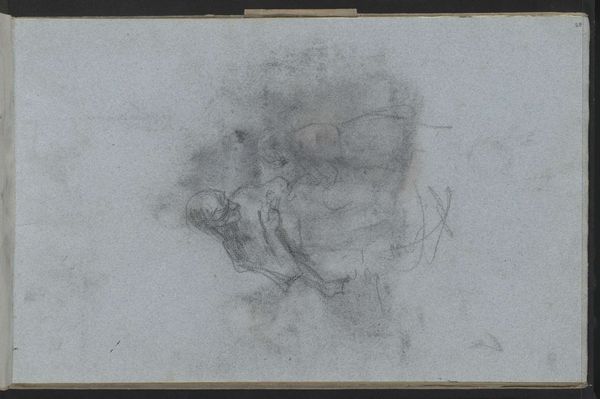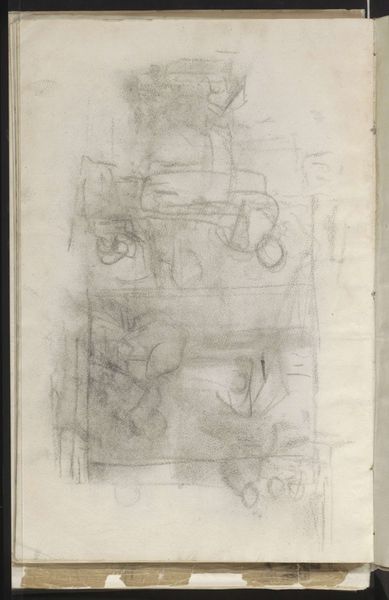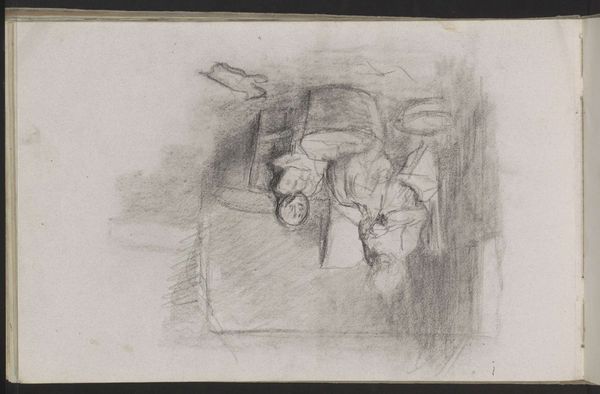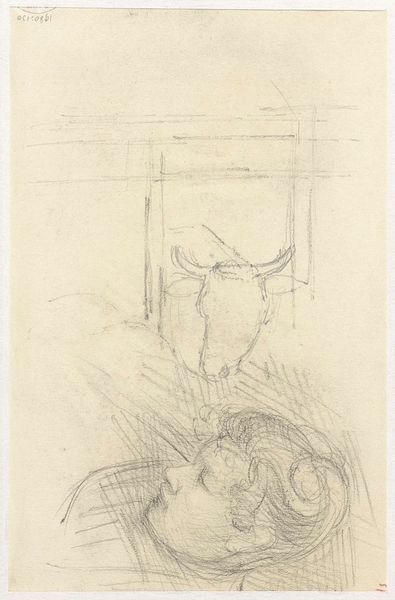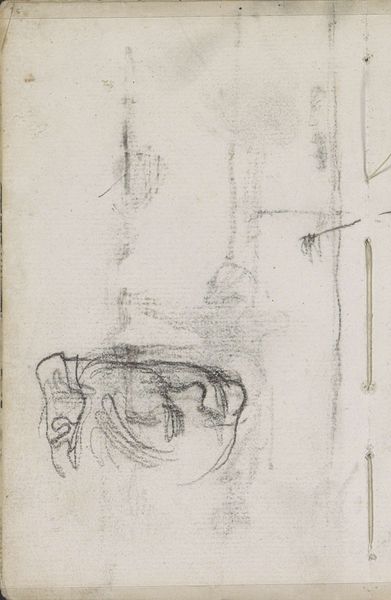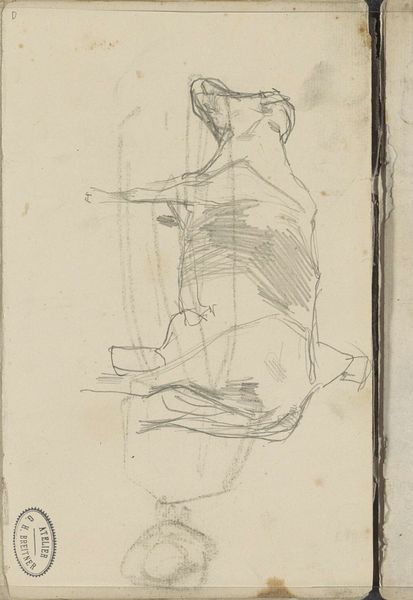
drawing, paper, pencil
#
portrait
#
drawing
#
pencil sketch
#
paper
#
pencil
#
genre-painting
Copyright: Rijks Museum: Open Domain
Editor: This is "Twee zittende vrouwen," or "Two Seated Women," a pencil drawing on paper, placing it sometime between 1854 and 1914, by Albert Neuhuys, currently held at the Rijksmuseum. The figures are faintly drawn; almost ghost-like and partially smudged; the shading lends a solemn, quiet atmosphere. What do you see in this piece; what stands out to you? Curator: Immediately striking is the contrast between the crisp, defined lines delineating the primary figures and the hazy, almost ethereal quality of the figures sketched in the background. Neuhuys employs varied pressure on the pencil to create depth and a hierarchy within the composition. Notice how the tonal range shifts; from the lightest whisper of graphite to the more assertive shading that grounds the seated women. Editor: I can see that, now that you point it out! The density of the shading really makes the central figures stand out. Are those other figures even part of the same composition, or just preliminary sketches? Curator: An astute observation. The juxtaposition raises interesting formal questions. Are these figures meant to be perceived as a unified scene, or are they studies exploring variations of posture and form? The intentionality of the artist remains open to interpretation, which is part of the intrigue of a sketch like this. What do you make of the composition as a whole? Editor: I think the incompleteness adds to the charm. The interplay of the finished and unfinished, of solid and ephemeral, adds layers of complexity to a seemingly simple genre painting. I hadn’t really considered sketches as ‘finished’ pieces before! Curator: Precisely! The inherent qualities of the pencil medium – its capacity for both delicate suggestion and forceful assertion – are brilliantly exploited to convey a sense of quiet contemplation and understated grace.
Comments
No comments
Be the first to comment and join the conversation on the ultimate creative platform.
